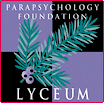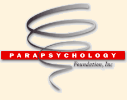 |
 |
| THE BIOGRAPHICAL DICTIONARY OF PARAPSYCHOLOGY ALBERT VON SCHRENCK-NOTZING Physician; psychic researcher. B. May 18, 1862, Oldenburg, Germany; d. February 12, 1929, Munich. M.D., 1888, University of Munich. M. 1892, Gabrielle Siegle. One of the best known and most persistent of the psychic researchers of his day, Baron von Schrenck-Notzing devoted forty years to study and experiment, eventually equipping his own laboratory for the investigation of mediumship and frequently financing the publication of his own and others' reports in the whole field of parapsychology. He first became interested in the study of psychics through his work as a medical student with hypnotism and the therapy of suggestion. His interest was heightened when in 1889 in Paris he met the physiologist Charles Richet (q.v.), a serious student of telepathy. In 1891 Schrenck-Notzing published a German translation of Richet's reports on his experiments in thought transference. It was to mediumship, however, and in particular to physical phenomena, that Schrenck-Notzing devoted his greatest attention. Over the years he studied the work of Eusapia Palladino (q.v.), Eva Carrièe, Stanislawa Tomczyk, and the Austrian brothers Ruid and Willi Schneider (qq.v.), and many others. Often he collaborated with Richet, with Dr. Eugene Osty (q.v.), and with such British researchers as F.W.H. Myers, Sir Oliver Lodge and Henry Sidgwick (qq.v.). Because such physical phenomea as levitation, the movement of objects without apparent physical contact, and the seeming materialization of amorphous masses and phantom-like figures during seances have always aroused skepticism, Schrenck-Notzing took extreme precautions in an effort to prevent conscious or unconscious fraud during his investigations. Mediums were carefully searched before seances and sometimes examine internally, given an emetic, or required to eat a colored food like blueberry am on the theory that this would stain the substance that issued from their bodies if it were not "ectoplasm" but physical matter concealed in the stomach or throat. Mediums were also required to wear tightly fitted seance clothing and their arms and legs and often their heads were held by investigations during trance. These precautions did not save Schrenck-Notzing from criticism and even ridicule when he reported the occurrence of physical phenomena at such sittings. But he doggedly continued his efforts to prove to others what he considered the reality of materialization and other physical phenomena until his sudden death at the age of 61. According to his associate and friend, Dr. Gerda Walther, Baron von Schrenck-Notzing was inclined "to attribute psychic occurrences to the workings of the subsconscious mind," although "in rare cases he did not entirely exclude the spiritualistic theory." Schrenck-Notzing wrote many monographs and articles on his investigations, several of which appeared in Zeitschrift für Parapsychologie. His books included Materialisations-phänomene (1914; English ed., Phenomena of Materialization, 1920); Der Kampf um die Materialisations Phänomene (The Battle Over the Phenomena of Materialization; 1914); Die Phänomene des Medium Linda Gazerra; 1917) (The Phenomena of the Medium Linda Gazerra; 1917); Die physikalischen Phanomene der grossen Medien (The Physical Phenomena of the Great Mediums; 1926) and the psthumously published Die Entwicklung des Okkultismus zur Parapsychologie in Deutschland (The Development of Parapsychlogy in Germany; 1932); and Die PhĚnomene des Medium Rudi Schneider (The Phenomena of the Medium Rudi Schneider; 1933). See also "Schrenck-Notzing: Pioneer Researcher" (Tomorrow magazine, Winter 1958). Taken from Helene Pleasants (1964) Biographical Dictionary of Parapsychology with Directory and Glossary 1946-1996 NY: Garrett Publications |
 |

|
 www. parapsychology. org |
||